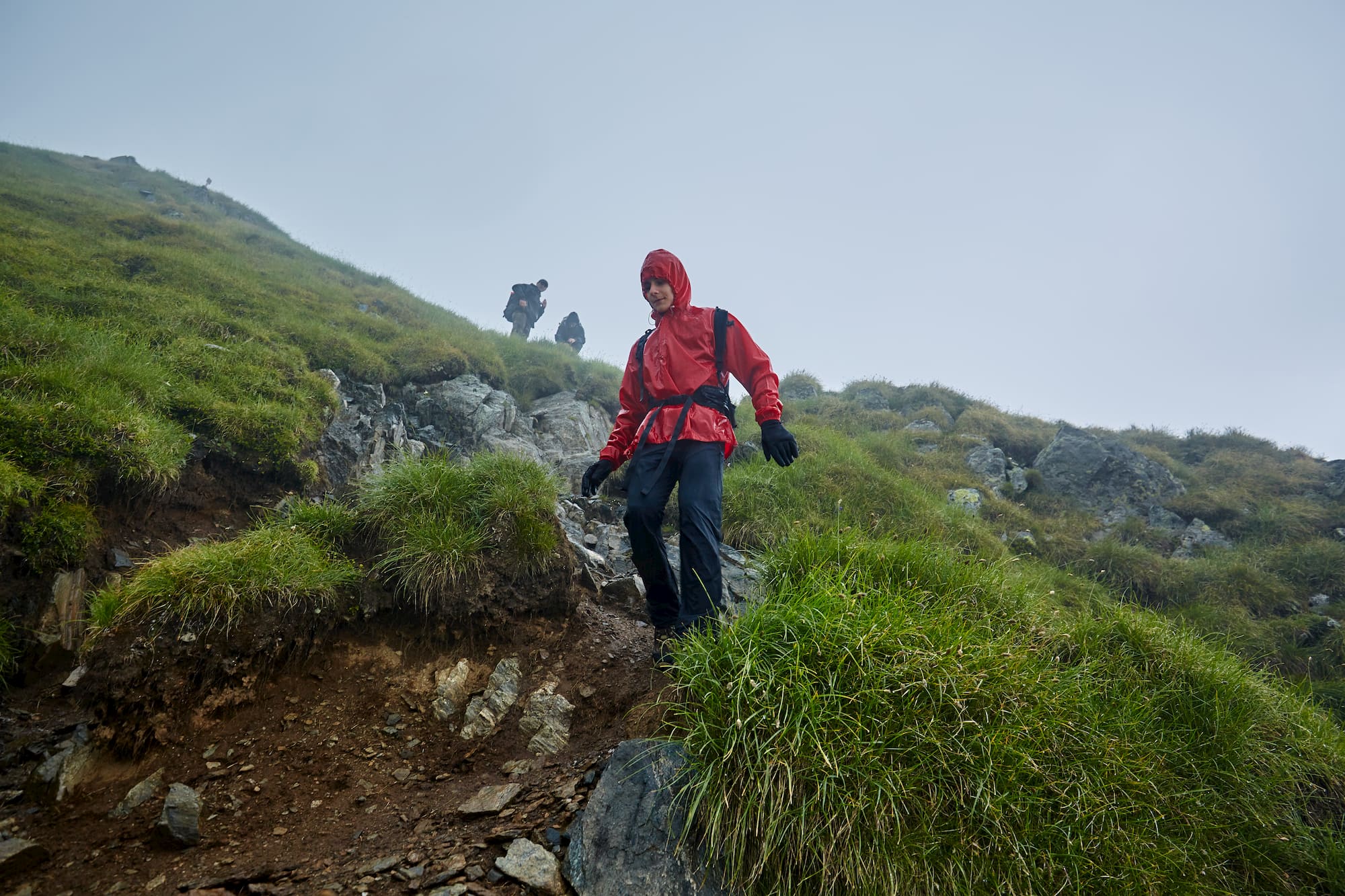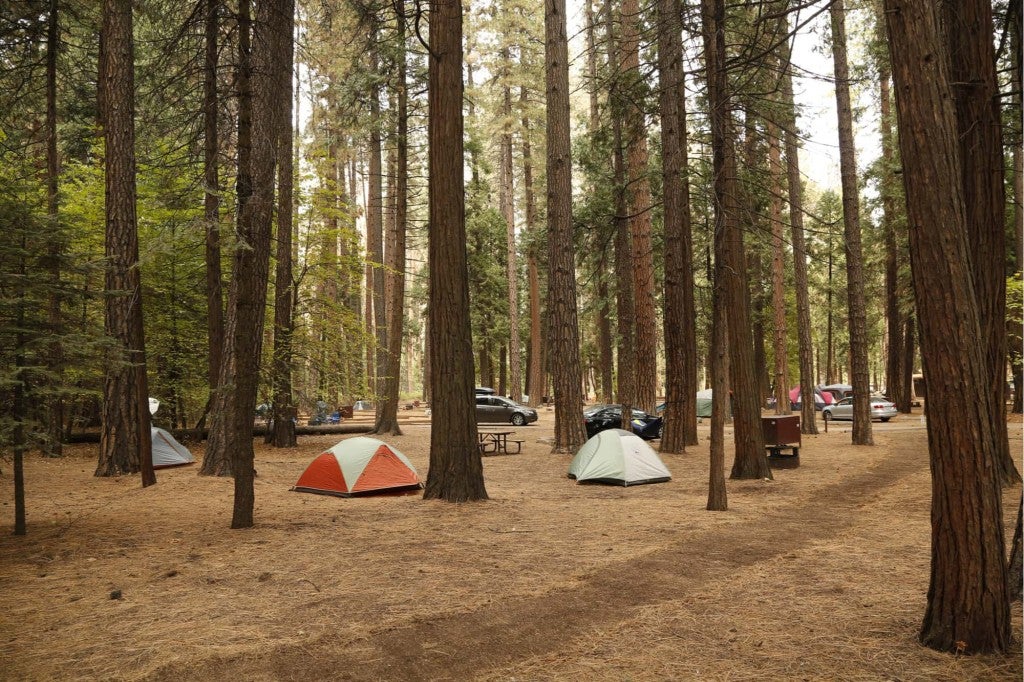This article was brought to you by Red Ledge who makes the best camping poncho for staying dry while exploring the rainiest places in the U.S.
Do you get giddy when you see storm clouds or hear the pitter-patter on your windows? Are you the type of person who turns on rainymood to fall asleep, or better yet—has their own rainstick? You are probably a pluviophile: someone who loves and finds peace when it rains. Being a pluviophile usually means you are in touch with the outdoors, and chances are you will be found out hiking in storms that would likely keep people inside.
After the summer’s long stint of scorching sunshine, pluviophiles might be searching for the next place with rain clouds to escape to—and likely with a great outdoors scene. This list of the rainiest places in the U.S. offers some great places for those seeking precipitation and outdoor adventure.
The 5 Best Places to Hike in The Rain
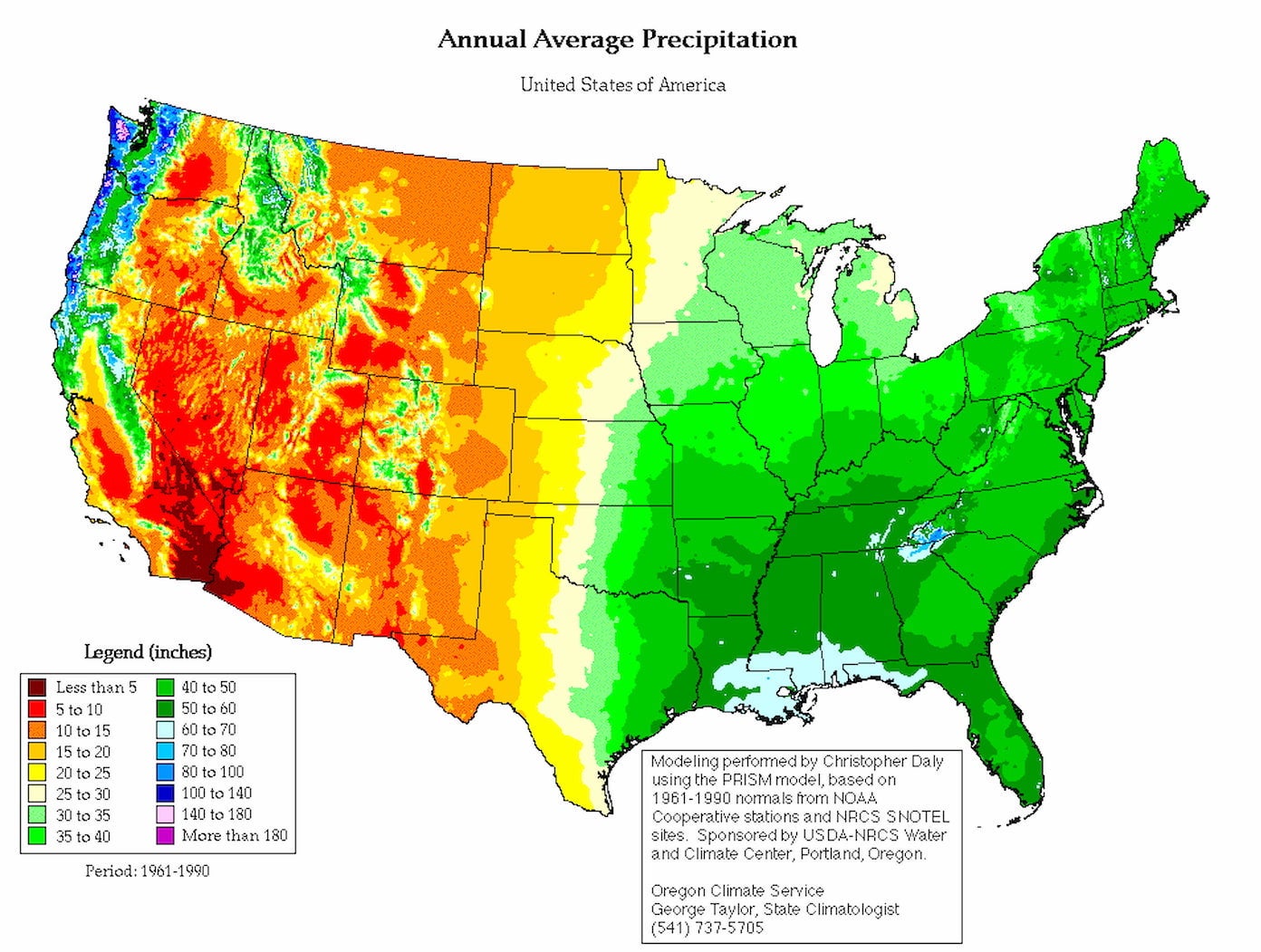
To those who love rain, you are in luck because the average rainfall is increasing worldwide! Due to climate change, there is a lot more rain in areas that used to get a decent snowfall. Within the United states the rainiest places are dispersed with the highest rainfall in the pacific northwest corner but the majority of rainfall happening in the central southwest.
1. Ketchikan, Alaska
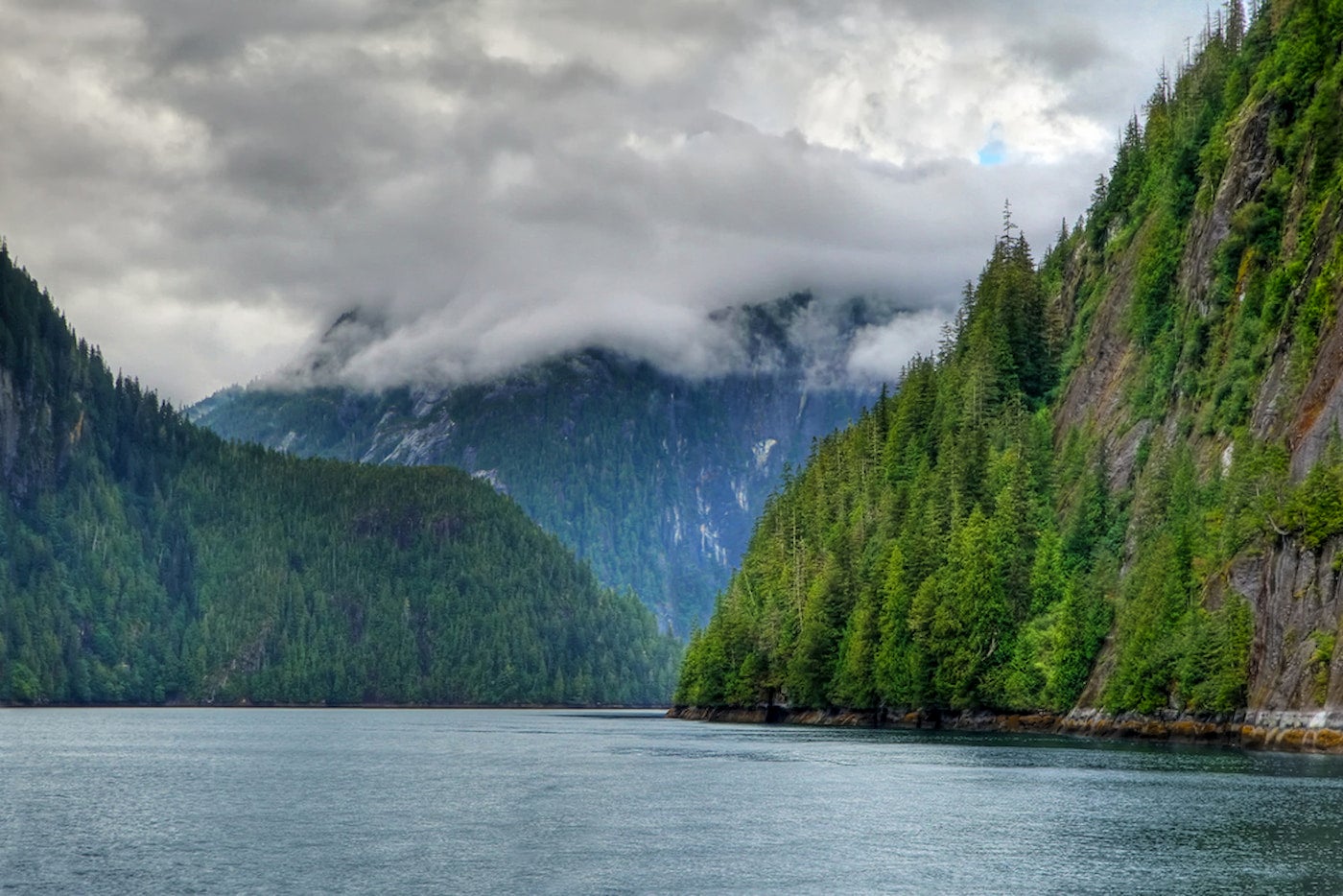
Located on southwestern Alaska’s Inside Passage, Ketchikan is a popular port city for cruise liners heading north to Juneau and Anchorage, and south to Seattle and Vancouver, Canada. Being at sea level, Ketchikan receives a bounty of precipitation from the surrounding waters, which never get cold enough to turn to snow. Also known as “Rain Capital of Alaska,” Ketchikan receives up to 160 inches of rainfall annually, and a total of 229 days of rain a year, on average.
Not only is Ketchikan one of the rainiest places in the U.S., but it’s also a surprising outdoors hub. There are a variety of hikes to choose from in close proximity to the city; you’ll find options along the coast, visit lakes and waterfalls, or summit one of the surrounding snow-capped mountains. Check out the Deer Mountain Trail for a strenuous 2,500 ft gain up to the most iconic peak in Ketchikan or take a walk around Perseverance Lake for a scenic 5-mile loop.
Camp Nearby: Deer Mountain Shelter
The Deer Mountain Shelter, located in the surrounding Tongass National Forest, is a great spot to find camping near Ketchikan and an ideal stop on your way to the Deer Mountain summit. This is a hike-in primitive campsite, with a first-come, first-served shelter for those rainy nights when you begin to doubt your rainfly. This shelter is an ideal pack dump point so you can summit without lugging all of your weight.
2. Mount Waialeale — Kauai, Hawaii
Mount Waialeale is one of the highest peaks on Kauai, the geologically oldest island in Hawaii and also home to the most diverse weather. Named “rippling water” after its immense rainfall, Waileale averages 373 inches of rain a year. On a clear day, you may catch a glimpse of this lush volcano but the best way to see Mount Waialeale is from the surrounding hikes.The most famous and also most strenuous hike is the “Blue Hole” or a hike to the Waialeale Crater surrounded by cascading waterfalls. While only 5 miles, this hike can be very disorienting and the weather can change quickly up on the mountain. For those looking for a less difficult hike, hike into the falls area about a mile down this trail.
Kauai is not only one of the rainiest places in the U.S. but in the entire world. Visiting the “Garden Isle” is perfect for those seeking some natural outlets including great surf, rainforest hiking, and volcano summits.
Camp Nearby: Kokee State Park
This camping area is surrounded by hikes to waterfalls and lookouts as well as the Waimea Canyon. Camp in a drive field with access to diverse environments including prairie fields, mountain landscapes, and canyons. It is conveniently close to the Waimea Canyon Trailhead which is one of the best ways to see Mount Waialeale.
3. Hoh Rainforest, Washington
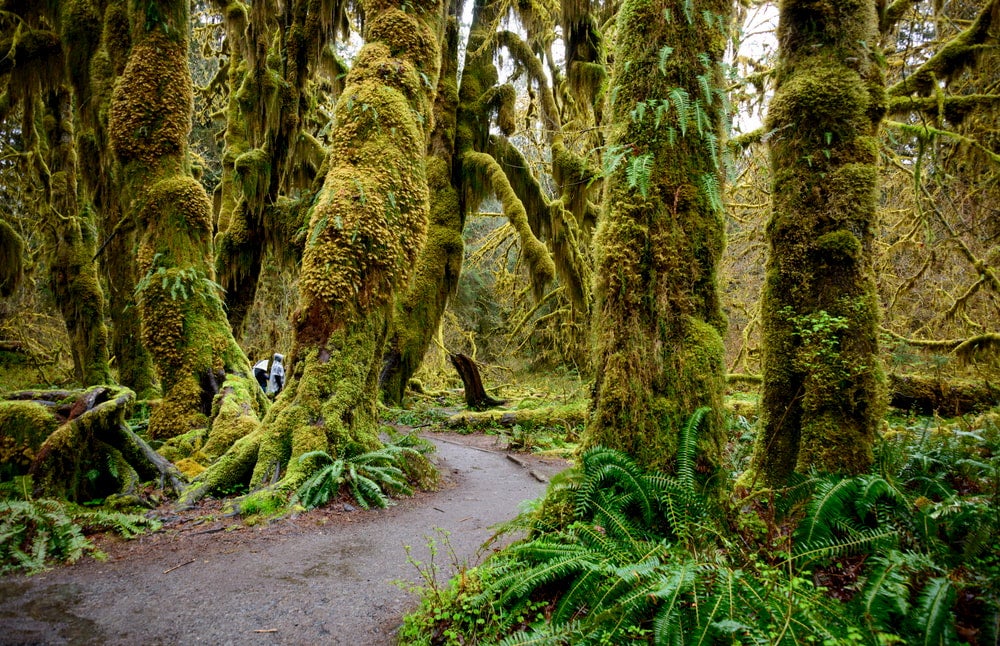
Tucked away in Washington state’s Olympic National Park, the Hoh Rainforest receives up to 170 inches of rainfall annually. The Hoh is the northernmost rainforest in the lower 48, spanning 24 miles along the Hoh River. This temperate rainforest is a mossy wonderland of green ferns, fungi, and evergreen trees. Upon arrival, you immediately notice the saturation of water from the squishy ground to the trickling creeks and waterfalls. The Hoh Rainforest sits in the northwest corner of Washington bordering British Columbia and the Pacific Ocean, where it receives moisture from the surrounding bodies of water.
Camp Nearby: Hoh Rainforest Campground
The Hoh Rainforest Campground is the only one within the rainforest! Camp in one of their 78 sites and hike into trails, waterfalls, and a plehtora of moss covered trees. The Hoh and the surrounding Olympic National Park are great areas for hiking, backpacking, and camping. They are based in the heart of the pacific northwest, the rainiest area in the U.S. so be sure to pack your rain gear. Their trails span the coast and cascades allowing for a variety of different outdoor experiences.
4. Laurel Mountain, Oregon
Laurel Mountain is the fourth tallest peak in Oregon’s coastal range but the number one spot for rainfall in this already very wet state. Just west of Salem, Laurel Mountain and the rest of the coastal range create a rain shadow, by catching all the moisture from the Pacific Ocean on the western side of the mountain and limiting the rainfall east of the range. Due to its proximity to the ocean and temperate weather year-round, the rainfall at this peak can average up to 200 inches annually.
As a destination, Laurel is not the most accessible mountain in the coastal range. Due to an FAA Station at the top, you need permission to summit, not to mention the hike follows a road instead of a forest trail. Coastal views, fog, and copious moisture will not be missed by hiking some of Laurel’s neighboring peaks in the coastal range like Saddle and Neahkahnie Mountain.
Camp Nearby: Saddle Mountain
Saddle Mountain is a nearby coastal mountain with a little less rain but a lot more accessibility. Saddle Mountain is also ideal because you can camp there! On a clear day you can see both the Pacific Ocean and Laurel Mountain from the top of this steep but rewarding trail.
5. Cashiers, North Carolina

Cashiers sits within the southeastern Blue Ridge portion of the Appalachian Mountains range that runs through the Carolinas and into northern Georgia. On average, Cashiers receives 81 inches of rain per year making it one of the rainiest places in the U.S. on the east coast.
This little village is off the beaten path just an hour south of Great Smoky Mountain National Park. Cashiers is surrounded by hiking trails, waterfalls, and mountains galore. This is a great area to visit while driving in or out of Georgia or North Carolina on your way to the Great Smoky Mountains.
Camp Nearby: Panthertown Valley Backcountry Area
If you are willing to hike in, Panthertown Valley is the spot for you. Get free range to hiking trails, waterfalls, and dispersed camping between the Blue Ridge mountains. This is lush forest is a great area for a backpacking overnight or just walk in a half mile and pitch your tent!
This article was brought to you by Red Ledge
Check out their ponchos, jackets, and rain pants to stay covered while hiking at coastal mountains, Hawaiin volcanoes, and temperate rainforests.
Related Campgrounds:
- Bayview Campground, Whatcom County, WA
Popular Articles:
Articles on The Dyrt Magazine may contain links to affiliate websites. The Dyrt receives an affiliate commission for any purchases made by using such links at no additional cost to you the consumer.

